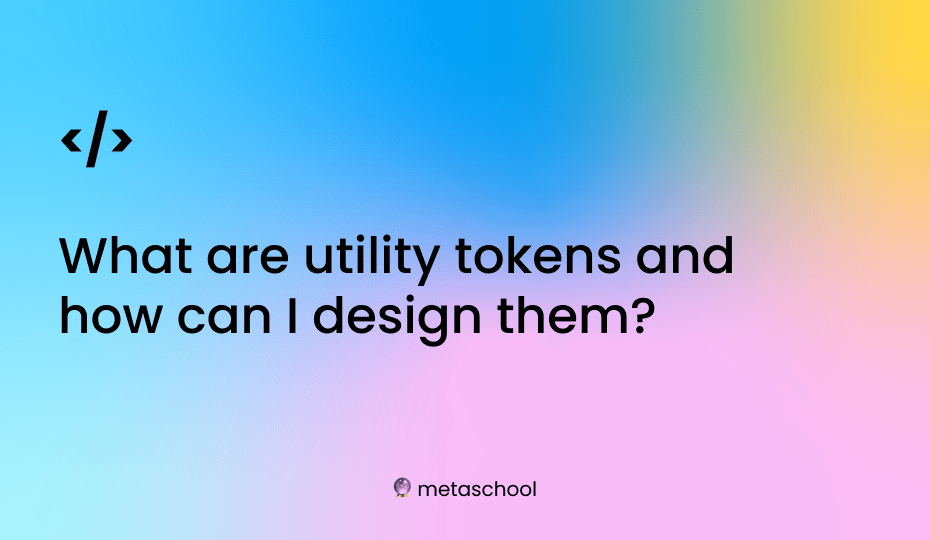Table of Contents
Utility tokens are digital assets that can be used to access a product or service. They are sometimes referred to as app coins, user tokens, or application tokens.
What are utility tokens?
Utility tokens are digital assets that can be used to access a product or service provided by a blockchain-based platform. They are also known as “usage/user tokens” or “app tokens/coins.”
These tokens are typically used to purchase goods and services within a specific platform, or to access certain features, such as voting rights or access to a specific service. They can also be used to pay for services and fees associated with the platform.
But its utility stays limited to that specific platform only and are different from other types of tokens, such as Bitcoin, which are designed to be used as a store of value and a means of exchange.
Check this out too 👇🏼
The value of utility tokens is usually determined by the demand for the platform’s services, as well as its supply and demand dynamics. And it should also be noted that they are often offered as part of initial coin offerings (ICOs).
Key factors involved in a utility token’s design
When designing a utility token, there are several considerations to keep in mind.
First, it is important to carefully consider the product or service that the token will be used for, as this will determine its value and utility. It is also important to think about how the token will be distributed and how it will be integrated into the company’s existing business model.
Additionally, it is crucial to consider the legal and regulatory implications of issuing a utility token, as different jurisdictions have different rules and regulations regarding the use of cryptocurrency.
Overall, the design of a utility token should be carefully thought out and should take into account a wide range of factors, including the product or service it will be used for, its distribution, its integration into the company’s business model, and any legal and regulatory considerations.
How to design a utility token
It’s pretty easy and you can do so on a blockchain platform of your choice, such as Ethereum or Solana. Here are the steps to start designing one.
- Define the product or service that the utility token will be used for. This will determine the value and utility of the token, as well as its overall design.
- Choose a blockchain platform that supports the development of utility tokens, such as Ethereum or Solana.
- Write the code for the utility token using the chosen blockchain platform’s programming language, such as Solidity for Ethereum or Rust for Solana. This code will define the token’s characteristics, such as its name, symbol, and total supply.
- Test the utility token’s code to ensure that it functions as intended. This can be done using a blockchain emulator or testnet.
- Deploy its code to the chosen blockchain platform. This will create a token on the blockchain and make it available for use.
- Distribute the token to investors or users who will be using it to access the product or service it is associated with. This can be done through an initial coin offering (ICO) or through other means.
- Integrate the utility token into the company’s existing business model. This will involve creating a mechanism for users to pay for the product or service using the utility token, as well as a way to track and manage the token’s use and value.
And that’s how it’s done. If you’re looking to design your own token, we have some super dope projects that are pretty fun to start with (pssst, there’s no charge for them either). Check them out by clicking the box below or to the right 🔮
